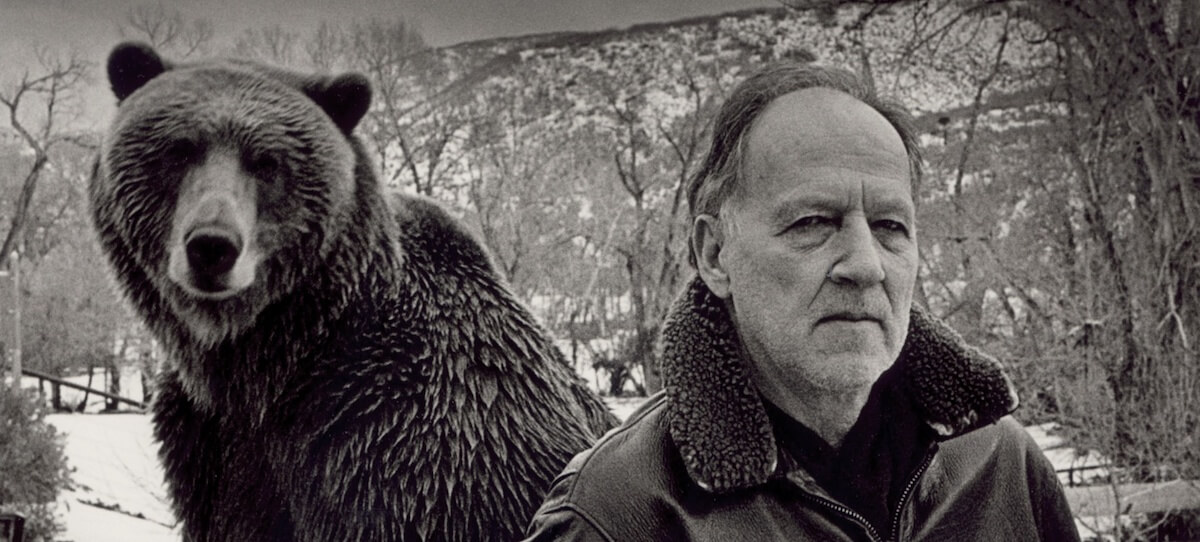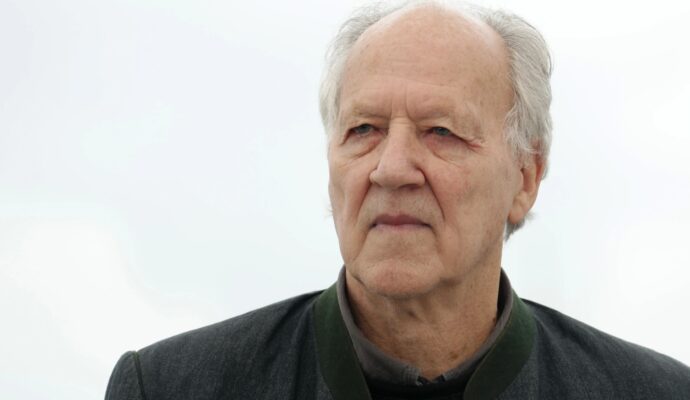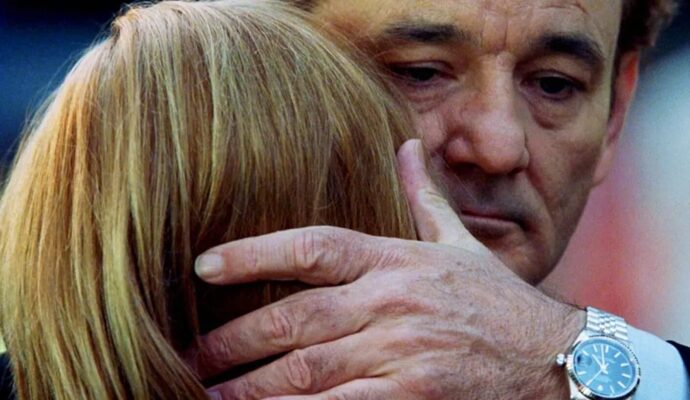Ten essential Werner Herzog documentaries
Werner Herzog turns 79 years young on Sept. 5, and this forward and fearless Oscar-nominated filmmaker frequently makes narratives and documentaries. One of the most celebrated aspects of Werner’s documentaries – at least to this critic – is his narration. His one-of-a-kind cadence, eccentric and blunt word choices, and old-school perspectives make him a most welcome verbal chaperone for his daring on-screen choices.
Well, in honor of this legend’s birthday, I’m looking back at ten essential Werner Herzog documentaries.
“Land of Silence and Darkness” (1971) – Fini Straubinger is a teacher, an astonishing one. Fini, 56, organizes group events and one-on-one meetings to connect with those who cannot see and hear. One might rightfully dub her a miracle worker, and Fini is also blind and deaf. Werner follows Fini as she communicates with brand new friends – at several sessions – through a deafblind alphabet. She spells out words on their hands and hosts irreplaceable experiences like a trip to a botanical garden and access to zoo animals. We see that physical touch is a vital need for these men and women. At one point, the screen goes black, and these words appear: “When you let go of my hand, it is as if we were a thousand miles apart.” It’s unclear who said the statement, but one can imagine that many blind and deaf individuals feel this assertion. Well, for 85 on-screen minutes, we aren’t going anywhere!
“Werner Herzog Eats His Shoe” (1980) – Werner did not direct this 20-minute short, but he is the bonafide star, as he (spoiler alert) eats his shoe in front of an attentive UC Theatre audience in Berkeley, Calif. The man of the hour vowed to dine on his footwear to help motivate his friend Errol Morris to make “Gates of Heaven” (1978). Morris did, and so Herzog does! Director Les Blank not only captures Werner preparing his meal with garlic, onions, and hot sauce, but Herzog offers several declarations about flawed society, filmmaking, and television for the camera. “We have to declare holy war against what we see every single day on television,” Herzog calmly asserts. Beautiful!
“Lessons of Darkness” (1992) – Iraq only needed a couple of days to invade and capture Kuwait in 1990, but the military set fire to the Kuwaiti oil fields that burned for months and months. The result was an environmental catastrophe. In-kind, Werner’s 53-minute documentary barely touches the actual war. His movie almost entirely focuses on the gruesome latter, as he captures the utter devastation of menacing blazes, miles of black smoke, and toxic oil lakes that soak in the desert. Several swooping shots by helicopter reveal a post-apocalyptic horror show that Herzog ironically sets to classical music. War may be hell, but so is its aftermath.
“Little Dieter Needs to Fly” (1997) – In the documentary’s second minute, we see Dieter Dengler driving along an empty, winding road in foggy Northern California. Werner recites, “Men are often haunted by things that happened to them in life, especially in war or other periods of great intensity. Sometimes you see these men walking the streets or driving in a car. Their lives seem to be normal, but they are not.” For Dengler, a German-born American and Vietnam vet, he lived through a six-month nightmare in a Viet Cong prison camp. Decades later, these two men – filmmaker and pilot – travel back to Southeast Asia, as Dengler recounts his story, but he does so with his close ally, Werner, and they lend their voices and spirits together. Dieter inspired Werner to subsequently make a narrative feature, “Rescue Dawn” (2006) with Christian Bale playing Dengler.
“My Best Fiend” (1999) – Werner featured Klaus Kinski in five of his films, but after watching “My Best Fiend” – in which Herzog describes, rationalizes, and demonizes his contentious relationship with the man – you’ll wonder how they ever finished one. Although their initial movie was “Aguirre, the Wrath of God” (1972), they first met when Werner was 13. Werner travels to a specific Munich apartment building – his childhood home for a stretch – and recalls his family lived with Klaus for a few months. What? Werner illustrates Kinski’s sheer madness at that time, and the documentary also offers footage from all five flicks, including the infamous actor’s mindless rages on “Aguirre” and “Fitzcarraldo” (1982), as Herzog and others on the sets describe their surreal experiences too. Still, Werner worked with him for years, but hey, what are fiends for!
“Grizzly Man” (2005) – Timothy Treadwell lived with grizzly bears for 13 summers in Alaska, but he never reached his 14th. A grizzly killed Timothy and his girlfriend, Amie Huguenard, towards the very end of his 13th trip. However, he filmed over 100 hours of footage during his last five tours. After his passing, Werner masterfully constructs his doc by interviewing Alaskan locals and Timothy’s friends and family, and then includes the grizzly man’s jaw-dropping clips. Confident but misguided, the 40-something Treadwell – sporting a blonde “Prince Valiant” haircut – frequently expresses his love for the animals, as the 1,000-pound behemoths sometimes step within a foot or two of our ill-advised protagonist. Werner perfectly opines, “I discovered a film of human ecstasies and darkest inner turmoil.”
“Encounters at the End of the World” (2007) – Werner grabs a camera and hops on a military plane that flies from New Zealand to Antarctica. His Oscar-nominated documentary is a gorgeous and equally frank look at an Antarctic summer. While he shoots some downright spectacular cinematic moments – like scuba divers swimming below the ice, rogue penguins leaving their colonies, and an active volcano dangerously bubbling and gurgling – Herzog focuses just as many minutes on the scientists’ daily grind. Werner distinctly expresses displeasure for McMurdo Station, a research center that resembles an “ugly mining down” with “abominations such as an aerobic studio and yoga classes.”
“Cave of Forgotten Dreams” (2010) – In 1994, Jean-Marie Chauvet, Eliette Brunel, and Christian Hillaire discover a cave in Southern France that contains art dating back 32,000 years on its walls, the oldest paintings ever discovered! Werner and his small crew were granted access to film this miraculous find. A majority of the artwork depicts animals – like horses, yaks, and rhinos – and Herzog and his team make the most of their precious time. The doc’s most glorious moments occur during the actual cave time when we see these majestic images, ones from an incomprehensible lifetime ago. Just incredible.
“Into the Abyss” (2011) – Two young Texas men are found guilty of murder, and while one serves a 40-year sentence, the other, Michael Perry, is on death row and awaits his looming execution. Werner travels to Southeast Texas – north of Houston – to candidly converse with the crucial people affected by this fateful, senseless day. Herzog finds several perspectives of the crime and an eye-for-an-eye justice system through the victims’ families, local police, acquaintances, a death row worker, the convicted murderers (Perry and Jason Burkett), and a couple of surprises. Werner does declare his opposition to capital punishment but gives complete respect to every interviewee and grants them open camera time to opine.
“Into the Inferno” (2016) – Werner’s doc is about volcanos, and when starring down into one, he narrates, “It’s hard to take your eyes off the fire that burns deep under our feet. It couldn’t care less about what we are doing up here.” He’s right, and while Werner delivers plenty of Herzog-esque pitch-perfect commentary, volcanologist Clive Oppenheimer supplies scores of facts and figures. This dynamic duo travels to Vanuatu, Ethiopia, Indonesia, North Korea, and Iceland as they speak to the locals, absorb the volcanos’ impact on the cultures, and explore the combustible geological formations. Our director can’t help but divert his attention towards some bizarre tangents that capture his eye except, of course, when he stares into an inferno!
Image credits: WernerHerzogFilmProduktion, Lions Gate Films, Image Entertainment, IFC Films, Sundance Selects,














